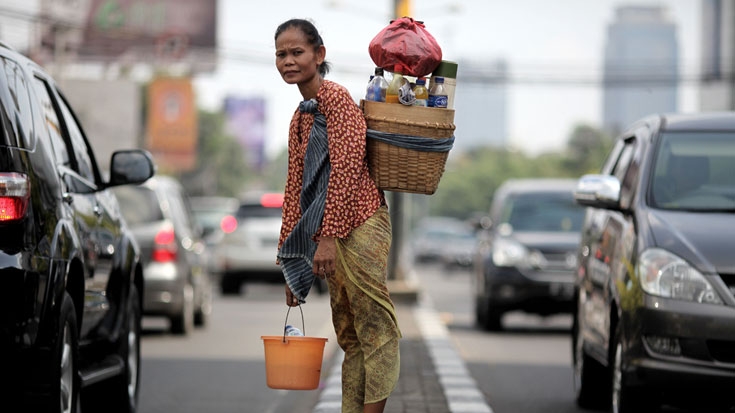The state of inequality in Indonesia
Inequality of household consumption in Indonesia has been increasing since 2000. The country’s official poverty rate has halved between 1999 and 2012, falling from 24% to 12%. However, the Gini coefficient, a measure of national consumption inequality, has increased from 0.32 in 1999 to 0.41 in 2012[1]. Hence income distribution has become much more unequal. The affluent were the most affected by the Asian financial crisis and slowest to recover, but since 2003, Indonesia’s richest 20% have enjoyed much higher growth in incomes and consumption. Regional disparities also persist, further contributing to inequality nationally. Eastern Indonesia lags behind other parts of the country, notably Java.
The relatively low consumption growth of Indonesia’s poorest 40%, and resulting inequality, may begin to adversely affect social and political cohesion. Strong economic growth and poverty reduction has not dampened the perception and reality that many Indonesians are not enjoying the fruits of economic development. There is some evidence that inequities in access to social assistance have increased crime and eroded social capital. In addition, growing inequality may be affecting political and social cohesion on a range of recent public policy issues, such as the contentious discussions in recent years over the minimum wage.
Low consumption growth of the poorest 40% may also threaten future economic growth nationally. The inability of Indonesia’s poorest 40% of households to exit vulnerability and move into the middle class could weaken economic growth, which is expected to be driven by a growing –and consuming - middle class. Lower consumption growth by the poorest will also lead to underinvestment in human capital and in entrepreneurial activities, further dampening broader economic growth prospects.
World Bank support on inequality reduction in Indonesia
The World Bank continues to work closely with the Government of Indonesia in analyzing the trends and consequences of inequality. The Bank is currently working on a flagship report on inequality, expected to be available in late-2014. The report will highlight new research on equality of outcomes and opportunities, mobility in and out of poverty, the middle class, and fiscal incidence. This research will serve as the foundation of support to be provided to the Government of Indonesia in designing and implementing policies to reduce inequality.
The World Bank also provides policy support based on evidence and success stories on reducing inequality in other countries. World Bank research in Latin American countries shows that a sound macroeconomic base needs to be supplemented with progressive policies, programs, and spending from the government. Providing equal access to vital services such as education and health will give future generations a better chance of climbing out of poverty. Enhancing the productivity of low-income workers through creating more and better jobs will boost incomes and allow the poor to help themselves. Finally, creating a comprehensive safety net will protect the poor from the various economic shocks that can send them plummeting back into poverty.
___________________________________
[1] The Gini takes the range of 0 (perfect equality) to 1 (perfect inequality), and is often expressed in percentage points. Commonly, values of 30 or below are considered low, while 50 and above are considered high. Income Ginis (used in many Latin American countries) are usually 5-7 points higher than Consumption Ginis (used in much of Asia and Africa). Indonesia’s Income Gini has historically been 4 points higher than its Consumption Gini.





